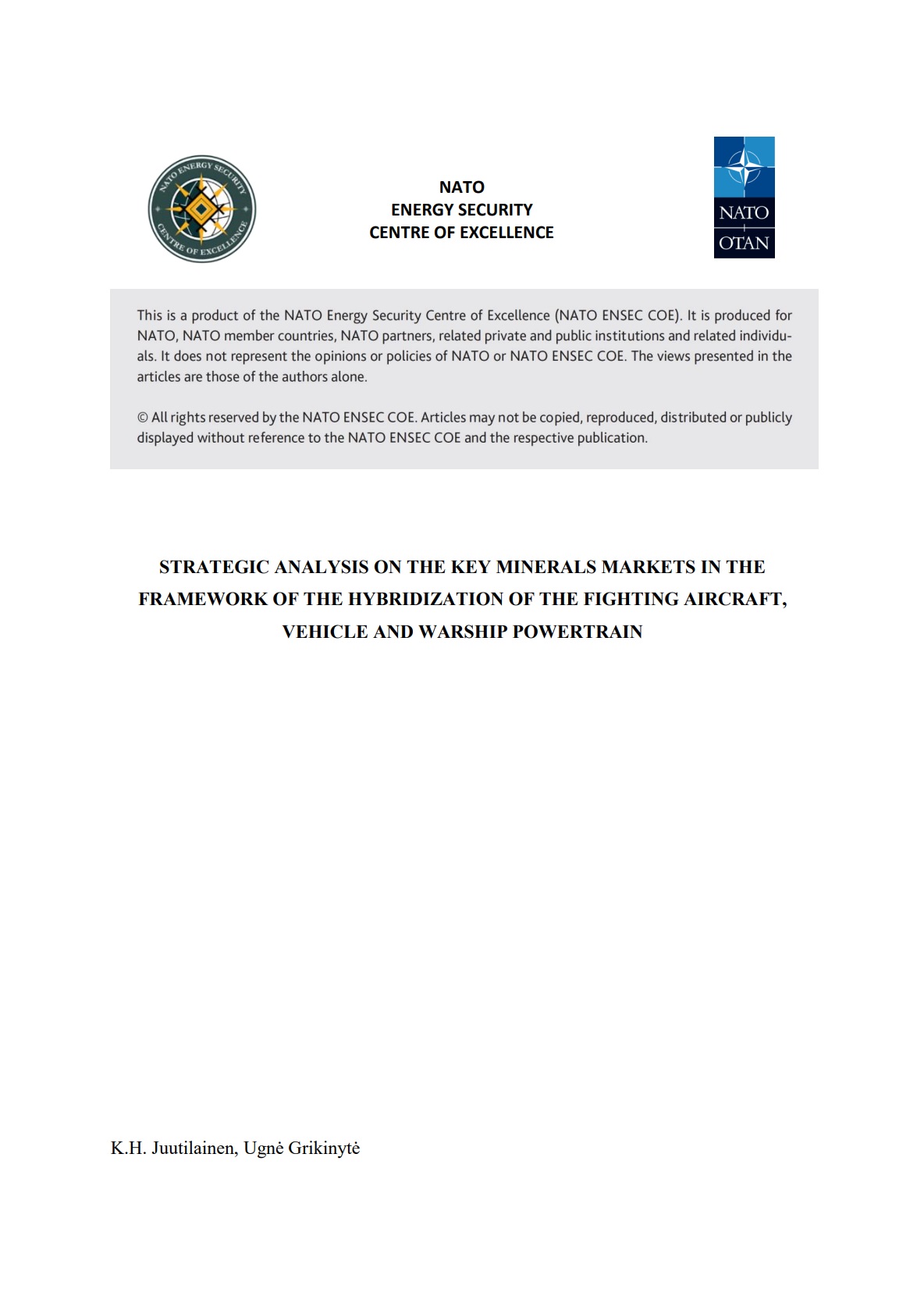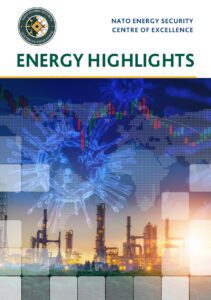
Hybridization of the fighting vehicle, aircraft and warship powertrain is ongoing trend with simultaneous process in civilian cars, aircraft and vessels. Hybrid powertrains’ usage expanses more rapidly in ground vehicles and vessels, but process is slower in aircrafts due to weight and energy density challenges. However, hybridization process of aircrafts/UAVs is highly likely inevitable in longer, 10 to 20 years perspective.
Key minerals for hybrid powertrains are metals and non-metals that are considered vital for the economic well-being and military capabilities of NATO nations, yet whose supply may be at risk due to geological scarcity, geopolitical issues, trade policy or other factors. The list of hybrid powertrain key minerals varies depending on country or exact technology, but most critical key minerals are rare earth elements (REE), lithium, cobalt, nickel, natural graphite, aluminum, antimony, titanium, niobium and silicone metal.
Key minerals market and supply chain is currently volatile and uncertain and there is a lack of transparency in complicated, globalized supply chains, but China is a dominating factor in many key minerals, especially in case of REEs, cobalt and graphite. If China does not has key mineral deposits on its own soil, it is actively acquiring mines abroad and/or locating processing and manufacturing parts of supply chain to China. According to open sources, Chinese government is in 2021 actively assessing how key minerals’ export restrictions would impact NATO nations’ industries.
When NATO nations’ dependency on key minerals regarding the hybrid powertrain is reviewed, the situation is dire, especially on short (1-5years) term. The challenge is that when global dependency on China REE-supply chain was acknowledged a decade ago, actions to lessen dependency have been insufficient and during ten years, new dependencies on new critical minerals and supply chains have appeared. In its strategic Made in China 2025 initiative, China has identified a diverse array of industries with emerging strategic and economic significance, including connected, autonomous, shared and electric vehicles and the batteries that power them.
Over 70 per cent of global electrical vehicle battery manufacturing capacity is in China. Over 75 per cent of the lithium-ion battery megafactories under construction worldwide are Chinese. China currently produces more than 60 per cent of the world’s cathodes and 80 per cent of anodes for batteries, and the majority of the world’s permanent magnets used in EV motors.
When situation is assessed in medium, 5 to 10 years’ perspective, the outcome is likely manageable if NATO nations initiate coherent, immediate action lessening key minerals’ dependency. There are two, simultaneously taken action tracks. First is long-term research and development funding for recycling and developing substitute materials for current key minerals. At same time, there is the need to develop critical mineral supply chain inside NATO and partner nations and co-operate diversifying process from Chinese and Russian key minerals. However, the problem especially in case of REEs is that it is possible that China would flood markets with REEs when other nations are about starting mining or production. In this case, governmental subsidies are needed to financially support new production.
Long, 10 to 20 years perspective has several possible futures. If NATO nations are satisfied with status quo, future electrical vehicle and hybrid powertrain supply chains will be located in China along knowhow, jobs, and associated military capabilities they enable. If long-term research and development funding for recycling and developing substitute materials is initiated in time along new supply chain (from mining to end-products), future is likely less dystopic. However, technological development does not stand still and it is possible that other new key minerals emerge from new technologies.
